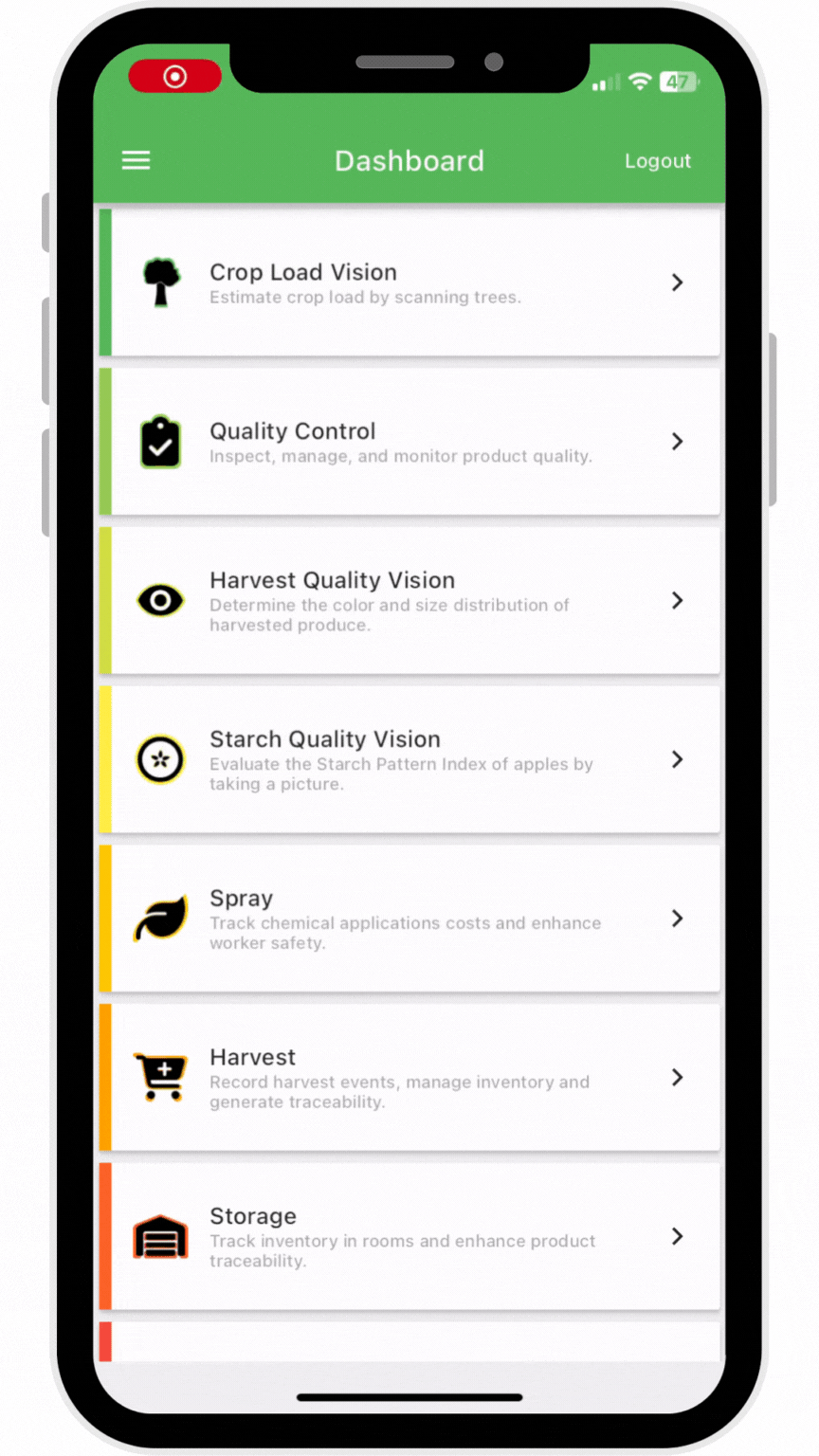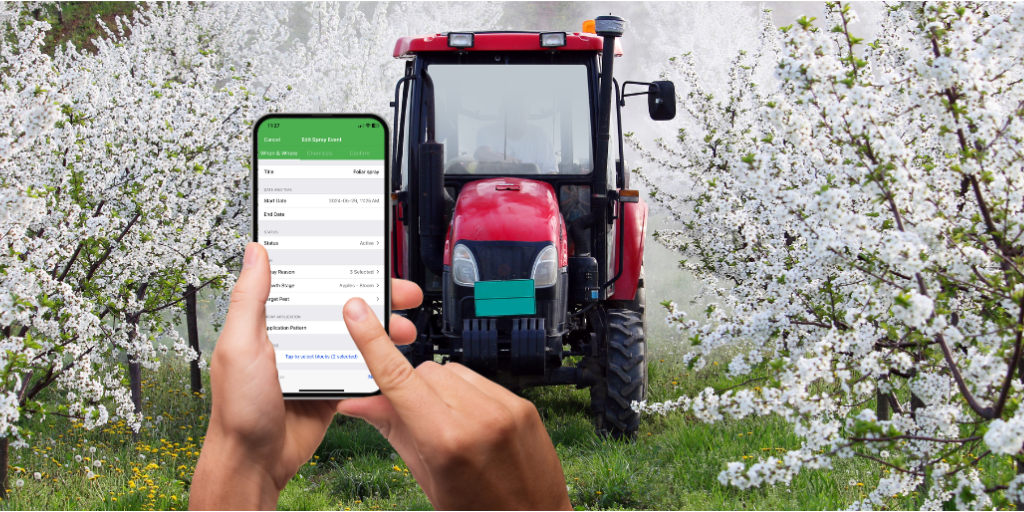Effective spray record-keeping is crucial for growers of any size, but as agricultural operations expand, the importance of comprehensive record-keeping and sharing becomes even more pronounced. Traditionally, farmers have maintained individual spray records for the locations they manage. However, when operations span large geographic areas with multiple farm locations, particularly on an international scale, managing spray records can quickly become overwhelming. Ensuring visibility and accessibility to records across all farms is essential for upholding food and worker safety standards and meeting export requirements for end products. This article explores the advantages of digitizing and centralizing spray records for large fruit and vegetable producers, growing associations, and cooperatives.
Cost and Resource Management
Integrated and digitized spray records facilitate easier cost-benefit analysis across diverse growing locations. When growers record details such as timing, unique tank mixes, weather conditions, and spray rates, these data points can be compared against harvest yields. This enables the identification of more effective spray treatments for growers with lower yields under similar conditions. Analyzing past spray records provides valuable insights into the effectiveness of different chemicals, application methods, and timing, guiding farmers in making data-driven decisions for future crop protection strategies.
Centralizing spray records streamlines the process of budgeting, ordering, and distributing chemicals for large producers. Ordering chemicals earlier in the season can save money and ensure what is needed is not out of stock. Historical chemical use and cost reports compiled across all growers simplify the management of chemical inventories for the entire organization. Ordering the right amount of chemicals for the next season becomes more straightforward with a centralized view of total chemical usage for the entire year.
Comprehensive digital spray tracking platforms go a step further by integrating chemical application costs with sprayer run time costs and labor costs. Identifying and tracking inefficiencies in equipment and labor across the entire organization is simplified when these records are consolidated. This approach not only facilitates quick comparisons of total farm costs over various time frames but also streamlines audit processes, generating required spray reports for auditors at the touch of a button.

Creating and Maintaining Standard Practices
Shared spray records make it easier to develop and monitor company-wide worker safety rules and comply with safety regulations. Accurate spray records help determine the necessary personal protective equipment (PPE) for each application, ensuring proper equipment is listed in assigned sprays. Integration with employee management ensures that work orders align with Pre-Harvest Interval (PHI) and Restricted Entry Interval (REI), preventing workers from being assigned to unsafe locations.
Detailed spray records not only contribute to worker safety but also support environmentally responsible practices. By tracking chemical usage, farmers can minimize environmental impact and develop company-wide environmental standards using historic spray data.
Digital spray tracking tools facilitate license maintenance and enable agronomists or spray managers to develop work orders for licensed individuals. This ensures that the most knowledgeable organization members have visibility and control, enforcing best practices and mitigating risks effectively.
Compliance with Safety Regulations and Residue Management
Detailed spray records contribute to compliance with food safety and export regulations by ensuring chemicals are not applied to products destined for countries with restrictions on specific chemicals. Digital spray applications enable customized rules and restrictions, warning sprayers before applying restricted chemicals. Up-to-date spray records also ease the linkage of spray data with inventory data, aiding in traceability during unexpected issues or recalls.
Monitoring and recording spray applications contribute to better residue management, crucial for meeting varying residue restrictions between countries. Farmers can assess the potential for chemical residues on crops and take measures to minimize any negative impact on food safety and quality.
In case of accidents or emergencies, detailed spray records are crucial for first responders, aiding in understanding the nature of chemicals involved and facilitating a safer response. Proper records also help farmers identify and address issues related to equipment malfunctions or human errors during spray applications, reducing the risk of accidents and exposure incidents.
Monitoring and recording spray applications over time can contribute to long-term health surveillance programs. This allows farmers to track potential health effects on workers and take proactive measures to address any emerging concerns. Including information on restricted entry intervals (REIs) and pre-harvest intervals (PHIs) ensures that workers do not enter treated areas prematurely, minimizing the risk of exposure to potentially harmful residues. Recording sprays properly is a proactive measure that contributes to creating a safer work environment on farms. It not only protects workers from immediate hazards but also supports long-term health, regulatory compliance, and overall safety awareness and improvement.

Customer Spotlight:
Since 2007, Croptracker has been supporting the Ontario Apple Grower’s (OAG) in digitizing their member’s spray records. This provides immediate benefits to individual growers, allowing them to maintain chemical inventory and cost records and easily generate reports for auditors. Additionally, OAG administrators have access to member-wide spray data from multiple seasons, using it to ensure effective treatments are registered appropriately in Canada. This information also supports recommendations to growers based on common and effective treatments recorded in Croptracker’s spray module, fostering shared information about Integrated Pest Management strategies in the region and effective fertilizer recommendations.
The analysis of spray records provides insights into the effectiveness of current spray protocols and allows for continuous improvement. Centralized spray records make it possible for large companies to implement changes to enhance safety, and improve effectiveness and cost-saving measures based on historical data and lessons learned from previous applications. Deciding to purchase spray software for a large organization can be daunting, but the benefits of creating standards and accessible reporting make it worth the effort.
Croptracker develops agtech solutions for industry leaders. Located in Eastern Ontario, Canada, our mission is to make crop production safer, more efficient, and more profitable. Designed in partnership with fresh market producers and distributors, every tool we create is based on direct industry feedback. Croptracker’s award-winning farm software optimizes recordkeeping, labor tracking, production and cost management. Our integrative Harvest Quality Vision technology offers instant empirical analysis of crop samples exactly when you need it. Optimize your harvest season with Croptracker’s customizable solutions. Visit Croptracker.com to learn more about our products and contact us for app based solutions.


